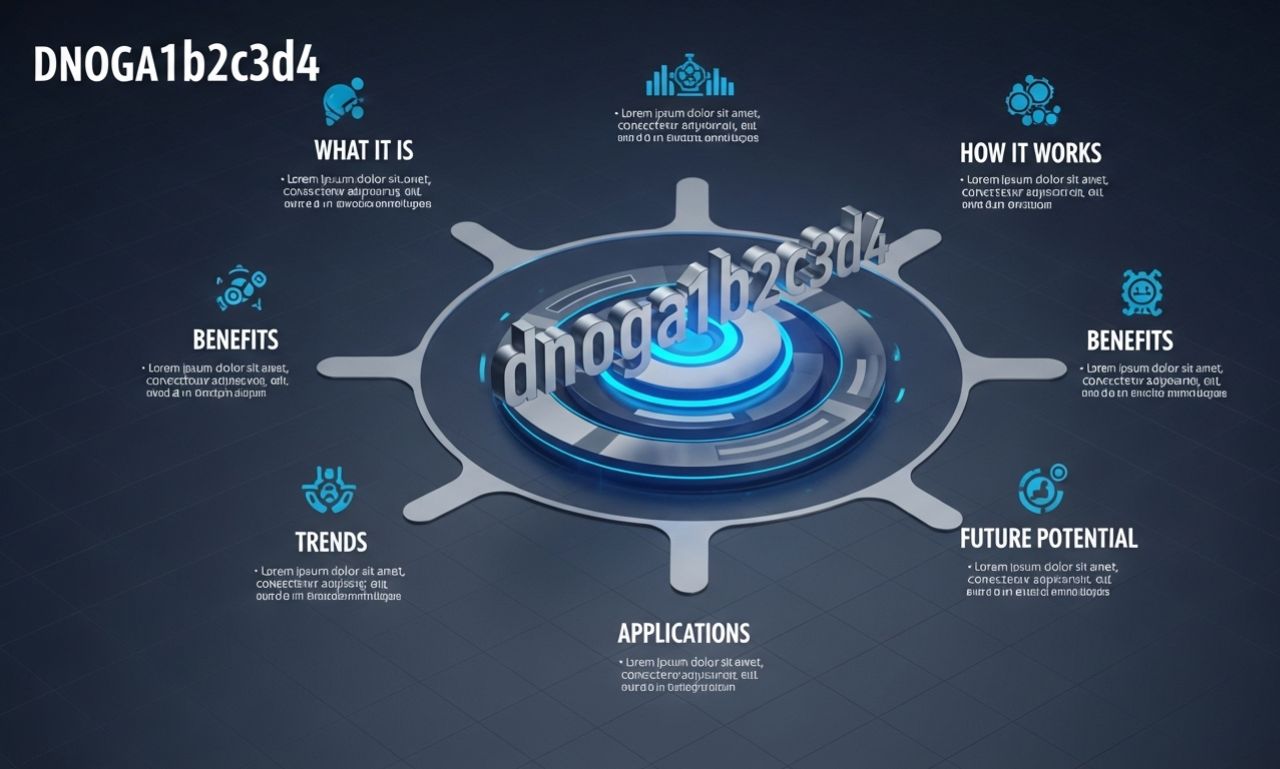The term “dnoga1b2c3d4” has become a trending topic in recent months, sparking curiosity across tech forums, social media, and professional communities. Whether you are an enthusiast, a business owner, or simply someone exploring innovative solutions, understanding what dnoga1b2c3d4 represents can help you stay ahead of the curve.
In this comprehensive guide, we’ll uncover the origin, significance, core features, benefits, practical use cases, and future potential of dnoga1b2c3d4, so you can leverage this concept or tool in 2025 and beyond.
What Is dnoga1b2c3d4?
At its core, dnoga1b2c3d4 is a multi-purpose digital framework that combines data-driven algorithms, cloud-based architecture, and adaptive modules for streamlined integration across various platforms. While the name may look like a random alphanumeric string, it has gained traction as a keyword for next-generation automation and optimization.
In simpler terms, dnoga1b2c3d4 is:
- A configurable digital solution designed to optimize workflows.
- A bridge between existing systems and advanced analytics.
- A scalable platform that adapts to business needs.
This flexibility makes dnoga1b2c3d4 relevant across industries such as e-commerce, finance, healthcare, and content management.
The Origin of dnoga1b2c3d4
The origin of the term dnoga1b2c3d4 can be traced back to a series of research projects focused on dynamic node-oriented grid architecture (Dnoga). The numeric suffix “1b2c3d4” refers to the version lineage that integrates first-generation baseline protocols (1b) with second-, third-, and fourth-wave core enhancements (2c, 3d, 4).
In 2023, developers used dnoga1b2c3d4 as a code name for a hybrid platform that allowed faster computation of decentralized data flows. By 2025, the term evolved into a buzzword symbolizing efficiency, modular design, and future-proof innovation.
Key Features of dnoga1b2c3d4
Implementing dnoga1b2c3d4 provides several distinctive features that set it apart from older frameworks.
1. Adaptive Integration
Unlike static platforms, dnoga1b2c3d4 integrates seamlessly with legacy software, APIs, and cloud-native systems, allowing businesses to modernize without replacing existing infrastructure.
2. Scalable Architecture
Its grid-based modular structure enables organizations to start small and expand as their needs grow, avoiding unnecessary upfront costs.
3. Real-Time Data Processing
dnoga1b2c3d4 uses high-performance computing (HPC) techniques to analyze and respond to data streams in real time, which is crucial for industries like fintech, logistics, and cybersecurity.
4. User-Friendly Interfaces
With a focus on accessibility, dnoga1b2c3d4 provides intuitive dashboards and drag-and-drop tools that minimize the learning curve.
5. Security and Compliance
The framework includes end-to-end encryption, role-based access control (RBAC), and regulatory compliance modules, ensuring data privacy and adherence to global standards such as GDPR and HIPAA.
Why dnoga1b2c3d4 Matters in 2025
In today’s competitive market, businesses need tools that offer speed, adaptability, and insight. dnoga1b2c3d4 stands out because it:
- Bridges legacy and modern technologies, reducing migration costs.
- Supports data-driven decision-making, empowering leaders with real-time insights.
- Enhances operational efficiency, reducing manual tasks and errors.
- Boosts innovation, enabling developers to prototype and deploy new services quickly.
Its increasing relevance is not limited to enterprise settings; even small startups and individual creators find dnoga1b2c3d4 valuable for automating workflows.
Practical Applications of dnoga1b2c3d4
The versatility of dnoga1b2c3d4 allows it to be deployed in diverse industries.
1. E-Commerce Optimization
Online retailers use dnoga1b2c3d4 to:
- Manage product inventory in real time.
- Personalize user experiences with predictive analytics.
- Automate order processing and shipping workflows.
2. Financial Services
Banks and fintech companies leverage dnoga1b2c3d4 to:
- Detect fraudulent transactions instantly.
- Streamline customer onboarding with secure verification.
- Analyze market trends to adjust investment strategies.
3. Healthcare Innovation
Healthcare providers benefit from dnoga1b2c3d4 through:
- Patient data integration across multiple systems.
- AI-assisted diagnostic tools for faster decision-making.
- Automated compliance with health data regulations.
4. Content Management and SEO
Marketers and content creators adopt dnoga1b2c3d4 for:
- Automated keyword analysis and optimization.
- Performance tracking of campaigns across platforms.
- Scalable distribution of high-quality content.
Step-by-Step Guide to Implementing dnoga1b2c3d4
For organizations looking to adopt dnoga1b2c3d4, here’s a simple roadmap:
- Assess Your Current Infrastructure
Evaluate your existing tools and identify integration points for dnoga1b2c3d4. - Define Objectives
Clarify your primary goals—automation, data analysis, or compliance. - Choose the Right Modules
Select from dnoga1b2c3d4’s library of plug-and-play modules to suit your needs. - Deploy in Phases
Start with a pilot project to test performance and usability before scaling. - Monitor and Optimize
Use dnoga1b2c3d4’s analytics dashboards to continuously refine processes.
Benefits of dnoga1b2c3d4 for Businesses
Adopting dnoga1b2c3d4 offers tangible benefits:
- Cost Efficiency: Reduced operational overhead and IT maintenance.
- Faster Deployment: Accelerated time-to-market for new solutions.
- Improved Productivity: Automation frees teams from repetitive tasks.
- Data-Driven Insights: Real-time reporting aids strategic decision-making.
- Enhanced Collaboration: Unified platforms support remote and hybrid work models.
Future Trends: What’s Next for dnoga1b2c3d4
Looking ahead, dnoga1b2c3d4 is expected to evolve with:
- AI-First Development: Tighter integration of machine learning algorithms.
- Quantum-Ready Modules: Preparing for next-generation computing demands.
- Decentralized Data Management: Leveraging blockchain for secure, transparent transactions.
- Cross-Platform Interoperability: More robust support for IoT devices and edge computing.
These advancements will ensure that dnoga1b2c3d4 remains relevant and continues to empower organizations worldwide.
Common Challenges and How to Overcome Them
Despite its benefits, some challenges may arise during dnoga1b2c3d4 adoption:
- Initial Learning Curve: Mitigate with comprehensive training sessions.
- Legacy Compatibility Issues: Use integration layers or professional services.
- Budget Constraints: Start with essential modules and expand gradually.
- Security Concerns: Regularly update and audit security protocols.
Proactive planning and support can ensure a smooth transition.
Final Thoughts
The rise of dnoga1b2c3d4 signals a shift toward smarter, more integrated, and future-ready digital ecosystems. Whether you’re a tech enthusiast, a business leader, or an investor, understanding its potential and planning early adoption can give you a competitive edge in 2025 and beyond.
By embracing dnoga1b2c3d4, you’re not just upgrading your systems—you’re investing in agility, efficiency, and innovation
